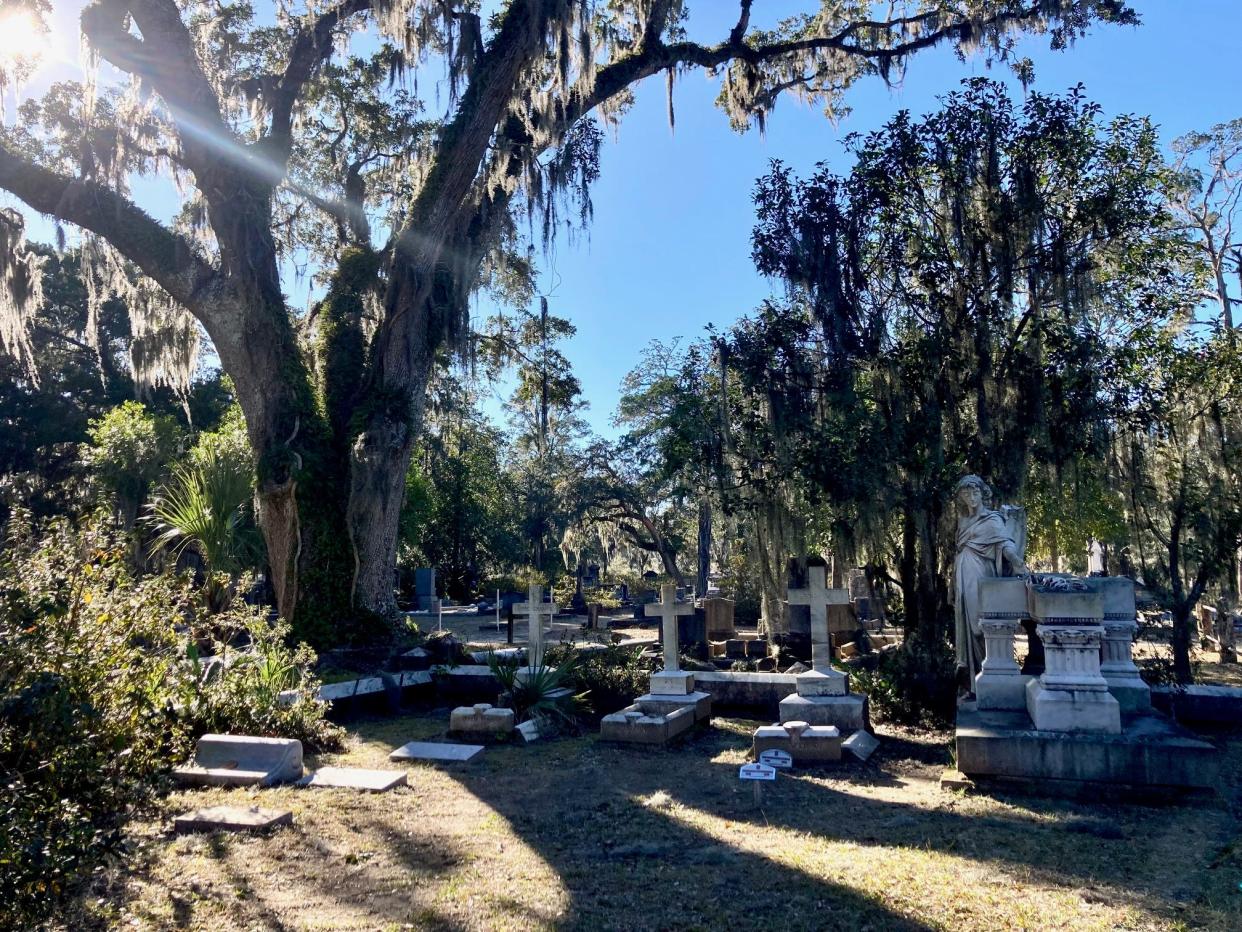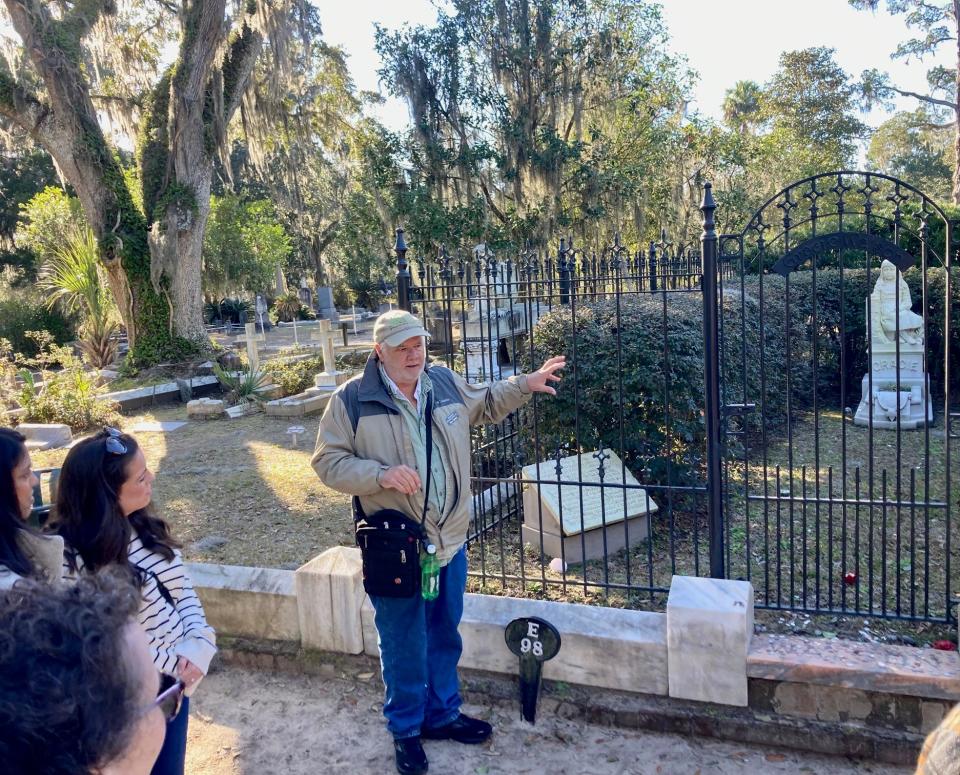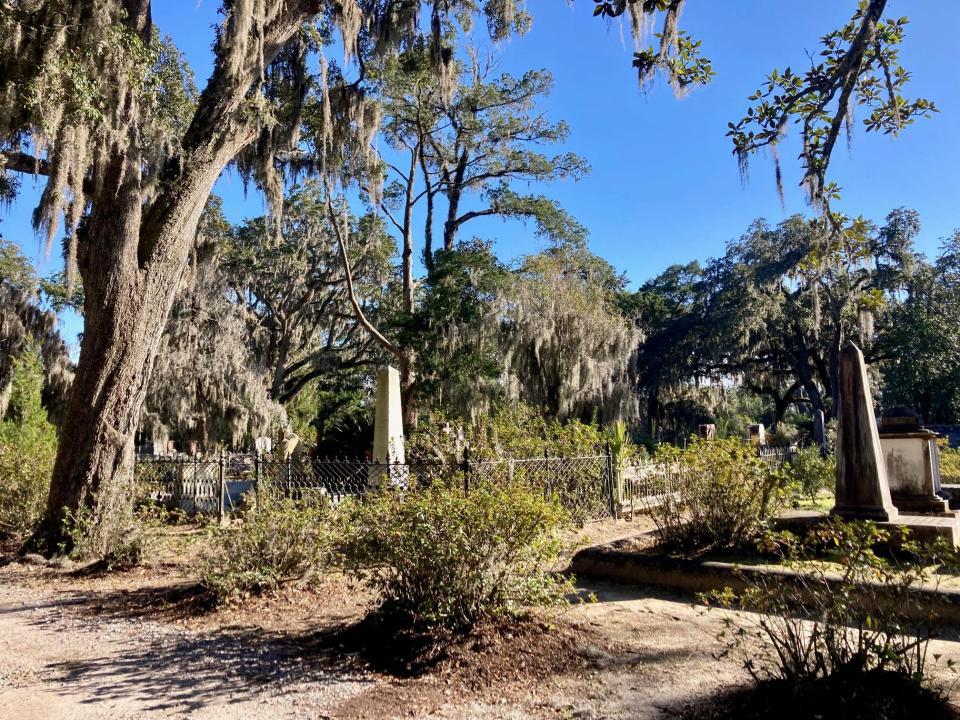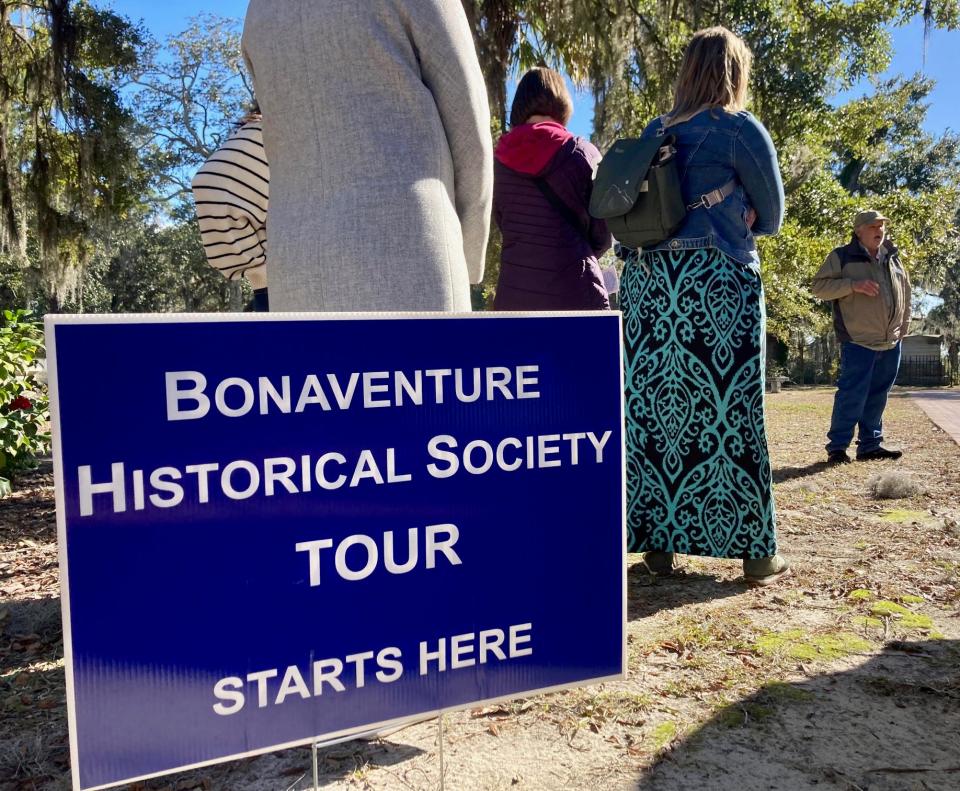Hometown Tourist: Hunt history, not ghosts, at Bonaventure Cemetery

- Oops!Something went wrong.Please try again later.
Let’s face it, the months of November and December can weigh heavy on the wallet. Extra travel, meals, parties, gift purchases — all great for making memories and connecting with loved ones, but potentially placing the wee months of the new year under strict budgetary restraint.
If you’re penny-pinching and looking for a low-cost, high-quality local experience, a history tour with the Bonaventure Historical Society might be exactly what your budget and brain need. The organization offers free, two-hour tours of Bonaventure Cemetery every second Saturday and Sunday of the month led by a rotating team of volunteers, packed with Hostess City history.
Established in 1992, Bonaventure Historical Society came about when a retired school teacher and some friends took action to preserve and share the histories of the cemetery’s best-known figures, while also committing to maintain detailed records of all its burials. In addition to offering tours, the organization protects and restores multiple grave sites within the 103-acre property.
Though established as a private cemetery in 1846, the City of Savannah purchased Bonaventure in 1907, making it a space for everyone to enjoy. Just three miles from downtown, the picturesque grounds rank within the Top 10 of multiple national must-see travel lists. And though, locally, its exact popularity is difficult to discern due to Bonaventure being public park land, the increasing number of city tour registration permits suggest the moss-draped burial scape is Savannah’s third most-visited tourist destination.
Truth and Beauty: Explore the craft of writing at the Ossabaw Island Writers' Retreat
Locavore: Forsyth Farmers' Market brunch connects diners with historic Gullah Geechee foodways

Tour focuses on rich history of people buried at Bonaventure
On a bright Sunday afternoon in January, I opted to go for it and take the tour. I arrived at Bonaventure 10 minutes early thinking that’d be time enough to park and use the facilities. But both main parking lots were full, and many people were already walking among the plots and headstones. I continued to the visitor’s center hoping to find someone who could show me the most respectful spot to park—obviously, not too near anyone’s resting place. A kind volunteer pointed me in the direction of appropriate overflow parking options.
I then dashed down the dirt thoroughfare of Mullryne Way to find the start of the tour, where a bundled group of nearly 50 people wound half-circle around the guide. I slid in back and caught the very end of his introduction, which emphasized this was not a ghost tour. This was, in fact, a history tour.
And with that, we were on our way.
First up, was a visit to the family plot of Mary Telfair. Though I’ve visited the Telfair museums multiple times and even learned about Mary Telfair’s support of the arts in a class at Savannah College of Art and Design, I didn’t know much about the personal details of her life.
But our guide did.

Don Teuton, a past vice-chairman and current volunteer with Bonaventure Historical Society, relayed highly researched anecdotes about the far-sightedness of the widely known philanthropist. Turns out, not only were most men in the community terrified of Mary Telfair’s diminutive 4-foot, 9-inch frame, but also, she could very well be Savannah’s first feminist.
Vacillating between adventure story and college lecture, Teuton revealed how in 1830 at age 39, Telfair inherited every cent of her family’s vast wealth, making her extremely powerful and sought after by suitors. But she knew better. As per the law of the day, were she to wed, all her wealth would go to the husband. And for her, that wasn’t an option. Telfair never married.
Instead, she used her fortune to fund art, enrich the Georgia Historical Society, support churches and schools, and most notably, establish a women’s hospital run by women. In time, Telfair Hospital for Females became the Mary Telfair Women’s Hospital at Candler that continues supporting women today.
Teuton continued with more of Telfair’s groundbreaking achievements, and yes, I took notes. This was way better than a college class. At his conclusion, Teuton mentioned he had a reading list with roughly 300 hours of materials he would provide to anyone interested in learning more about the Telfairs or other notables interred at Bonaventure.
Not far from Mary Telfair, rests Noble Jones, another luminary in early Savannah history. With pen flying, I continued note-taking as Teuton detailed how Noble Jones initially served as a carpenter on James Oglethorpe’s ship sent to establish the Georgia colony. While the vessel crossed the Atlantic, the curious Jones initiated a crash course in medicine alongside the ship’s surgeon.
Teuton emphasized, this was a good thing, because not long after the party’s landing in February 1733 at what would become present-day Savannah, the physician died, requiring Jones to take his place as doctor for the new colonists. After serving as a soldier, physician, surveyor, and member of the royal council, a little over 20 years later in 1756, Jones received a 500-acre land grant from King George that he used to construct Wormsloe Plantation, now a historic site managed by Georgia State Parks.
As our large group meandered among more headstones and monuments, we stopped to learn some of Little Gracie’s real-life history. We paused to appreciate Conrad Aiken’s hard life, bleak poetry and final resting place. Among the slumbering, Teuton also pointed out one of the original financiers of Eli Whitney’s cotton gin.

Gravesites filled with symbols that hold deeper meaning
Woven within these detailed history vignettes sits Teuton’s flair for the semiotics of the cemetery. Among some of the symbols, he explained how a tall obelisk indicates a life long-lived, while a broken column or flower buds reveal a life cut short.
I stepped back, pausing to appreciate the greater scene. And to better understand why Bonaventure has been so well loved as a picnic spot and family gathering place for more than 150 years.
Lichen-spotted headstones, towering obelisks and moss-draped live oaks create a synergy that make this historical cemetery uniquely beautiful. It’s also a great place for birds. In that moment, I noted a pair of soaring ospreys calling out to each other, a fussing trio of Carolina wrens, the whir of a small flock of cedar waxwings and a lone mockingbird fiercely reminding everyone this was his part of the cemetery.
As the tour drew to a close, Teuton reminded everyone that Bonaventure Historical Society is a non-profit and that charitable donations and membership fees directly support the organization’s conservation and educational efforts. Folks interested in volunteering are encouraged to get in touch. And the upcoming February and March tours are likely to be exceptional. That’s when Bonaventure’s azalea blooms take over in brilliant proliferations of red, white, pink and fuchsia.
To find upcoming tour dates and learn how to get involved, visit Bonaventure Historical Society’s website:bonaventurehistorical.org
Learn more about tour guide, Don Teuton: bonaventuredon.com
This article originally appeared on Savannah Morning News: Hunt history, not ghosts, at Savannah GA Bonaventure Cemetery

